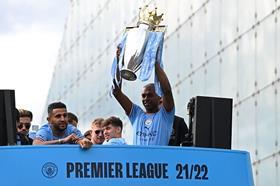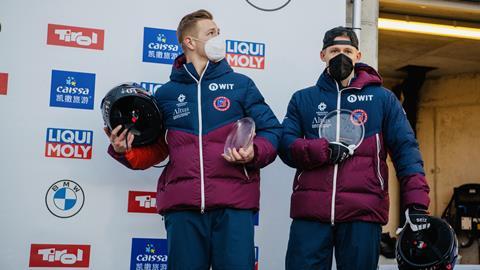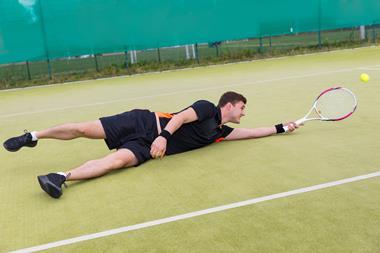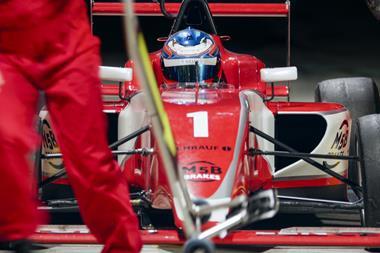Brokers must ‘think outside the box’ if they wish to fill the winter sports protection gap
In November 2021, Bobsleigh Brad - the number one, four-person bobsleigh team in Great Britain - tackled German bobsleigh, luge and skeleton track DKB Eiskanal Altenberg as part of its pre-season training.
Taking on the track’s 17 technical curves, it was soon apparent why bobsleigh athletes are required to sign a death waiver when gaining their sliding licence.
During the training run, the team’s bobsleigh - which was hurtling down the course at 75mph - violently collided into the 13th corner of the track.

Speaking exclusively to Insurance Times, Bobsleigh Brad team member Greg Cackett described the event: “My neck cracked and my ears burst into ringing.
“We rolled into corner 13 upside down [and] barrel rolled out - that’s where I smashed my head on the floor.”
The bobsledder explained that this “Alten smash” was made worse because typically following a crash, track workers will catch and hold the bobsleigh to prevent further injuries. However, in Germany, athletes are left to come to a natural stop on the course.
Following the accident, Cackett was left with shoulder pain that lasted for around eight months.
To add insult to injury, the insurance sector is seemingly unsupportive of covering these types of winter sports risks.
David Mayor, a member of the Forum of Insurance Lawyers’ (Foil) sports sector focus team and a partner at Forbes Solicitors explained that “sporting teams either face an expensive premium, or no insurance at all”.
He continued: “Winter sports often pose a high risk of serious [and] expensive [injuries which] are not covered by standard travel policies and standalone cover excludes competition all together.”
Is insurance failing athletes?
For anyone that has not seen the 1993 classic film Cool Runnings, bobsleighing is a winter racing sport that involves completing timed runs down ice-covered narrow and twisting concrete or stone coated tracks. Gravity powered bobsleighs are made from steel, fibreglass, or carbon fibre.

According to the International Bobsleigh and Skeleton Federation (IBSF), bobsleigh speeds can reach up to 150kmh (93mph), with athletes facing a gravitational force that is three times higher than normal.
Bobsleigh Brad pilot, Bradley Hall, confirmed Mayor’s perspective that winter sport cover is tricky to purchase.
In summer 2021, Hall said he reached out to “all the big insurers and some smaller ones” in order to obtain the relevant insurance, but it was “really hard to convince people to support us”.
For Hall, having insurance as a bobsleigh athlete is vital because the sport is all ”about taking calculated risks” - this means that crashes are, unfortunately, unavoidable.
”If we don’t take the risk to increase our speed, someone else will,” he explained.
Cackett agreed: “You have to accept that there is a certain degree of risk involved in the sport and give it your best shot.”
Aside from neck and shoulder pain, like what Cackett experienced in 2021, other common bobsleighing injuries include broken ankles or feet, broken ribs due to the increased pressure around corners, shattered collarbones, severed hand tendons or tearing a muscle. Concussion and possible resultant dementia is also a risk.
Hall and Cackett believe that worrying about these risks can hinder bobsleighers, potentially affecting their performance.
Mayor added that outside of injuries, there are also other risks athletes and clubs should consider covering.
He said: “Winter competition generally involves fewer team events and a decreased likelihood of incurring a third party liability, leaving the bulk of the risk of loss to the individual competitor.
“However, liabilities can occur even in the most innocuous circumstances and often outside of competition - equipment left in walkways, failing to properly maintain gear.
“Clubs may also become inadvertently liable for their competing athletes’ actions, given the ever-expanding rules on vicarious liability.
“It is imperative that clubs seek professional advice to minimise their potential exposure.”
Read: Specialist insurer launches bespoke scheme for sports sector via new partnership
Explore more insight articles here.
Protection gap
For insurance to improve for athletes, Hall said that “one of the most helpful things” would be ”to find a cheaper solution, especially with us on budget”.
He cited usage-based medical insurance as an example.
Cackett, meanwhile, suggested that a specifically-tailored broker service may work well, where advisors can speak with athletes about car insurance, for example.
He explained: “With Team GB, you get offered certain things where [it] might help you in doing things in life – a mortgage advisor might come in and you can speak to [them] and they’ll advise athletes on how they can get mortgages. That sort of service [around insurance] could be really good.”
Help around athletes’ career transition is another way insurance intermediaries can “think outside the box”, especially if “there are interesting career opportunities where athletes could be leveraged [and] given a post-sport career,” Cackett continued.
Former England and Harlequins rugby union player Jack Clifford is one example here. A string of shoulder injuries forced him to retire from professional sport in 2020, so he claimed on his career-ending injury insurance policy, which was brokered by Gallagher. He now works for the broker as a business development executive.
Cackett added that mental health support, such as talking therapies encompassed into a comprehensive insurance package, would be a “huge” benefit for athletes too.
“If there [are] gaps [where] insurance companies [can] get involved with teams like us and athletes in the sports fraternity, it is [around] things like medical insurance, potentially for concussion and ongoing head trauma support. In a less serious respect, it would be [purchasing] equipment, which is expensive,” Cackett continued.
For example, the BBSA - the representative body for bobsleighing and skeleton for the UK - recorded that the average cost of a bobsleigh is between £25,000 and £70,000.
PASS NOTES

What is Bobsleigh Brad?
The British bobsleigh team, named Bobsleigh Brad, consists of pilot Brad Hall and brakemen Greg Cackett, Nick Gleeson, Sam Blanchet, Taylor Lawrence and Luke Dawes.
At the Beijing Winter Olympics in February 2022, Hall, Cackett, Gleeson and Lawrence represented Great Britain.
Does Bobsleigh Brad have sponsorship?
Financial services consultancy Altus is one of Bobsleigh Brad’s sponsors.
Kevin Okell, managing director at Altus, told Insurance Times: “When Cackett and Hall first spoke to us, we could not help but be impressed by their passion and commitment to succeed.
“Altus has always been proud of our connection with Bath and the local community. From the very early days of the company, we have supported local youth sport and enjoyed watching both individuals and teams grow and develop.”
What insurance is currently available for bobsleigh athletes?
SportsCover Direct, underwritten by Axa XL, provides insurance for travel, sports accidents, medical expenses and repatriation.
InsureandGo, owned by AllClear Insurance, also provides some cover in this field.
Allianz Partners, meanwhile, has some travel policies that will cover bobsleighing on a recreational basis for an additional premium. The insurer said, however, that it will ”never cover this activity on a competitive basis”.











































No comments yet